- Bernard Preston homepage
- Cyan zones
What is a cyan zone?
What is a cyan zone explains how we can combine the two powerful concepts behind blue and green living, caring both for ourselves and the planet.
Most of us know that a greenie is a person who is passionate about preserving the planet for the next generation. The more we see the garbage building up in landfills, the plastic on our beaches and begin to experience the impact on our own well-being, the greater the appeal to join the movement; albeit perhaps in a small way like recycling our trash.
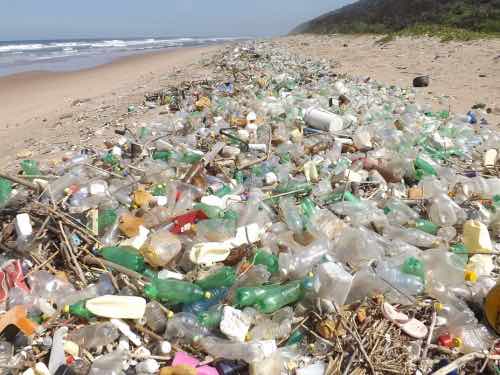
Add to that the trash that now contaminates the food we eat; the salt from the sea, the best of our drinking water and the air we breathe. It is becoming increasingly difficult for even the denialist to look the other way and pretend that all is well in the state of Denmark.
The Blue Zones are those five areas of the world where folk are ten times more likely to reach happy and robust old-age. Longevity is the word; one in a thousand achieves a hundred years.
What is a cyan zone? Establishing these principles at our home has become the passion of our dotage; all the blue and green issues.
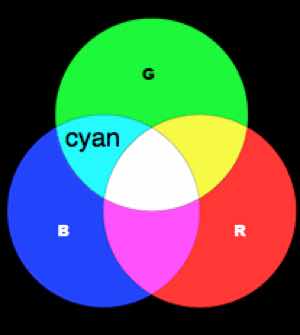
There are three primary colours; red, blue and green.
If you mix blue and green light you get a colour called cyan; turquoise might be a better known term.
For the physicist cyan is a mixture of blue and green light. It comes in many different shades.
What is cyan?
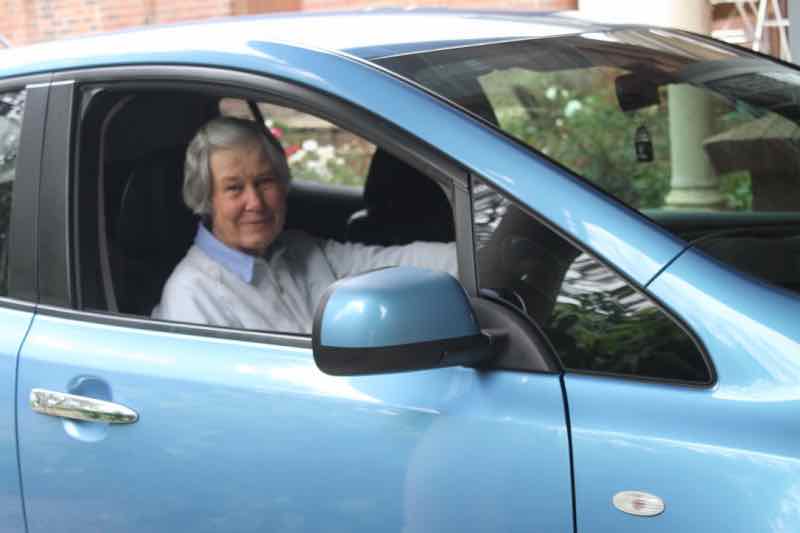
Is our Nissan Leaf blue or green? It's a mixture, of course. It adheres to the requirements of those trying to create a cyan zone; it is powered only by energy acquired from the solar panels on our roof.
It has no engine, just a very powerful motor; and makes no contribution to green-house gases. Turning over a blue leaf became our New Year's resolution. Once you have driven an electric car you will never turn back.
What is a cyan zone?
What is a cyan zone is not a question that many people will be asking. Yet it is such an important concept. By combining all the virtues of blue and green living we can preserve not only ourselves but also the planet.
That means longevity, free from many of the chronic degenerative diseases that plague mankind whilst also sustaining and protecting Mother Earth from the rapacious human beings that inhabit her; that means us.
Sign up for our newsletter below which addresses these issues.
“It is impossible for ideas to compete in the marketplace if no forum for their presentation is provided or available.”
Thomas Mann
Blue zones
It is fascinating that in the five blue zones of the world there are independently many common features. The people are gardeners; they grow much of their food at home.
They all grow and eat broad beans, known to be one of the few natural sources of a phytonutrient that the body can transform into dopamine, the happy hormone. They are also the richest source of vegetable protein after soya; and the only legume to contain all the essential amino acids.
Family is strong as are relationships with friends and neighbours; and in all the Blue Zones, religion is prominent. There are no old-age homes.
For a fascinating study of the blue zones of the world, watch this 19 minute YouTube video of Dan Buettner. How to live to be 100 is a story for all of us[1]. You can also catch the film series on Netflix.
Not just 100 is their boast; strong and full of zest right into the nineties.
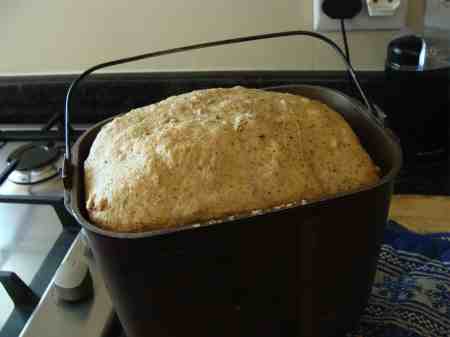 Wholegrain sourdough is a feature of Blue Zone countries
Wholegrain sourdough is a feature of Blue Zone countriesIt really is possible, in some small way to clock into blue zone longevity in your own backyard. Many things may have to change, of course, often drastically. These people make more time for issues they consider important; we will have to alter a few of our priorities.
One of those changes for us was how to acquire 100% wholemeal bread; in all five blue-zone countries they bake and exclusively enjoy sourdough loaves. We soon realised that meant purchasing a mill and finding a source of the grain. Learning about storing wheat was the next challenge.
The pay-back is that the hours spent on these new priorities are multiplied many times over in both the quality and length of life. Does the thought of reaching ninety years of age and perhaps even a hundred with all your marbles and joints intact, full of energy not appeal?
What is a cyan zone? I hope you are beginning to understand why I am so passionate about the subject. There is something powerfully spiritual about it all; caring for the self and for Mother Earth. For too long the cry of many people has been and still is "we loathe this worthless food[2]."
Green Zones
Harvesting rainwater
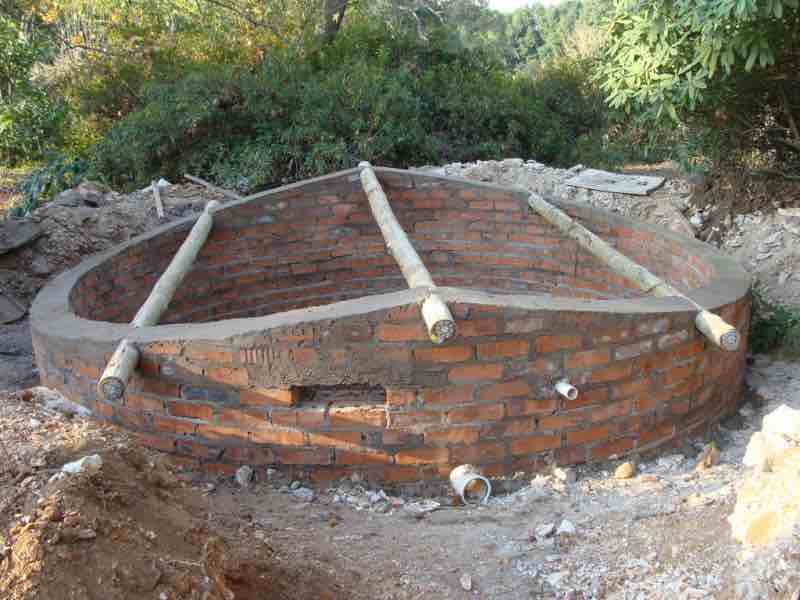
Caring for the planet is an incredibly complex subject. Begin wherever you are. That might be with recycling the trash, like "doh re me" it's a very good place to start.
Our particular need when returning to our native South Africa was for a reliable supply of clean water. Storing the harvested rain as they do in the Netherlands was the obvious place for us; and it proved remarkably inexpensive.
Far cheaper than tanks, visually not unattractive once the bushes had grown, the water is extremely cold underground; that makes bacterial proliferation unlikely.
This is how we store rainwater and ten-years later it still provides for our total needs. Only twice in that time have we had to use the utility; how awful it tastes.
Water scarcity in the world is becoming a major problem; in the near future it will not be oil and gas that are the causes of great conflict.
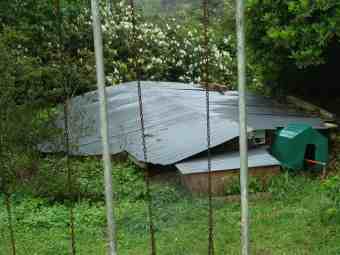
All the predictions are that the wars of the future will be over food and water. Yet we allow the rain falling on our roofs to run off to waste without a thought.
Every family living in a free-standing property should be considering a rainwater harvesting model.
What is a cyan zone? Providing a reliable source of clean water at your home protects you from the junk in today's utility supply; it is a fundamental greenhouse-gas issue.
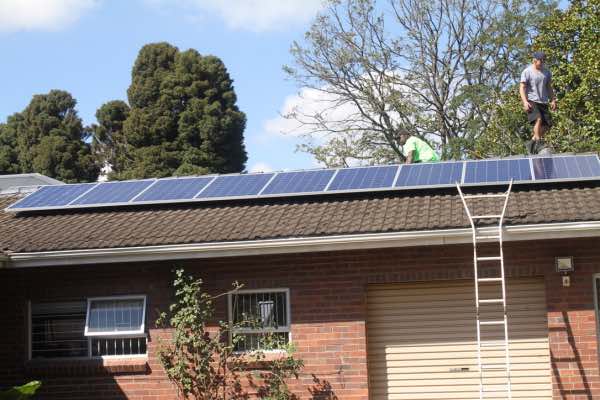
Harvesting sunshine
Either the planet Earth is going to harvest energy from renewable resources like sunshine, or our grandchildren will be witnessing the most horrific climate-change that will end civilisation as we know it.
In countries with a reliable grid building a solar generator need not be an expensive business; the payback time is no more than perhaps five years. In others like South Africa one must have expensive batteries to cope with frequent grid-failure. Fortunately the technology is improving in leaps and bounds; and the price is dropping.
We have settled for an admix of north, east and west-facing panels to cope with the extra need for energy in the early morning and late afternoon.
What is a cyan zone? In part it's about reducing greenhouse-gases.
Is it perhaps time for you too to start saving for a solar farm? It's a far better investment than the stock-market with a guaranteed return.
Cyan zones
Obviously there is a synergy as we endeavour to capture many of the virtues of both the blue and green idealists; trying to create our own cyan zone.
It has not only been supremely satisfying but the improvement in our own wellbeing has been nothing short of dramatic. We take absolutely no medication and consultations with the doctor are an annual affair for a check-up; even visits to the dentist. That is pretty unusual in one's eighth decade.
I will admit though that routine care for our stretched and strained bodies has meant regular treatment for our joints and muscles. Gardening is hard work; as is clambering on the roof to check and clean solar-panels.
"It has been estimated that 20 percent of Medicare beneficiaries have five or more chronic conditions; and fifty percent receive 5 plus drugs."
Gardening for your own organic-food also provides the moderate exercise we all desperately need; and the escape for our souls from the trials and tribulations of modern life. It's our version of forest bathing.
Growing our own food is saving huge amounts of money and is also helping us wean off plastic.
Keeping worm
farms and making your own compost reduces the need for the inorganic fertilisers and pesticides used by modern agriculture. I wonder
if anyone has done any research on how many farmers today succumb to
leukemia or lymphomas?
What is a cyan zone? It's all about wellness for ourselves and the planet.
Law suits against the companies that manufacture many herbicides are hitting the press with massive payouts.
Understanding humus would improve the soil and create important facets of the cyan-zones in our gardens.
Harvesting the rain from the skies would reduce our exposure to microplastics and chemicals like the artificial sweeteners in our drinking-water; it would also help preserve a thirsty planet.
What is a cyan zone? I hope you too are concerned about the planet.
Fava beans
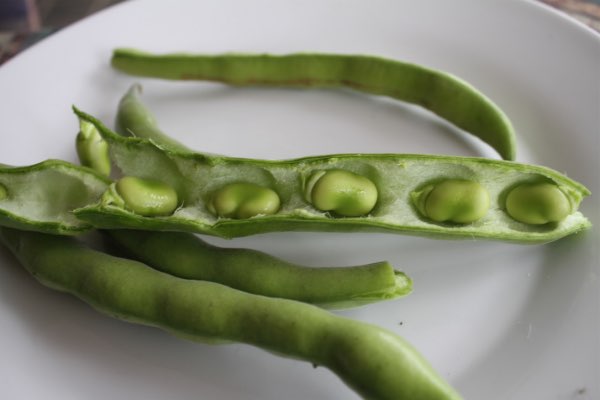 Enjoy them young, fresh and tender.
Enjoy them young, fresh and tender.Fava beans are independently grown and enjoyed in all five of the blue zones where wellness and longevity are the buzzwords. They are a rich source of the plant protein and L-dopa that our bodies need.
What is a cyan zone? I hope you too are becoming excited about living a very long and fruitful life free of chronic disease; and taking a lot less medication.
Simultaneously enjoying more fava beans for protein would reduce our need for red meat which requires ten times as much water to produce; cattle also contribute large amounts of greenhouse gases to the atmosphere whereas plants harvest carbon-dioxide.
The longevity diet encompasses all of these principles but uses occasional intermittent fasting too.
Old starchy broad beans are dreadful but fresh from the garden of someone passionate about creating a cyan zone, they are the most delicious protein-rich vegetable. Enjoy them for example in this avocado and fava salad.
One word of caution is important. Because fresh favas like those above are so difficult to obtain there is often the recommendation that after shelling they should be skinned. That greatly increases the glycemic index; they would raise the blood-sugar which would make them fattening.
Cyan zone people grow their own and enjoy them when they are young and tender. Freezing broad beans so they are available all year round is important to us.
How to plant broad beans is a much favoured page at our site.
Getting sufficient omega-3 in the diet is a controversial subject for those trying to create a cyan zone; the best sources are in the deep blue seas; and that means denuding our oceans.
However there are also sources of anti-inflammatory omega 3 that we can harvest from our gardens.
Laughter is the best medicine
When you are seriously into these blue and green matters life can get a little heavy; just for laughs reminds us of the lighter side.
What is a cyan zone? It's a place of joy as you create a niche where both your family and the planet can thrive. It has become the single most-rewarding feature of our lives.
- How to live to be 100; National Geographic TED talks video.
- We loathe this worthless food
When browsing use right click and "Open Link in New Tab" or you may get a bad gateway signal.
Newsletter
Our newsletter is entitled "create a cyan zone" at your home, preserving both yourself and Mother Earth for future generations; and your family too, of course. We promise not to spam you with daily emails promoting various products. You may get an occasional nudge to buy one of my books.
Here are the back issues.
- Investing in long-term health
- Diseases from plastic exposure
- Intensive lifestyle management for obesity has limited value
- A world largely devoid of Parkinson's Disease
- The impact of friendly bacteria in the tum on the prevention of cancer
- There's a hole in the bucket
- Everyone is talking about weight loss drugs
- Pull the sweet tooth
- If you suffer from heartburn plant a susu
- Refined maize meal and stunting
- Should agriculture and industry get priority for water and electricity?
- Nature is calling
- Mill your own flour
- Bake your own sourdough bread
- Microplastics from our water
- Alternative types of water storage
- Wear your clothes out
- Comfort foods
- Create a bee-friendly environment
- Go to bed slightly hungry
- Keep bees
- Blue zone folk are religious
- Reduce plastic waste
- Family is important
- What can go in compost?
- Grow broad beans for longevity
- Harvest and store sunshine
- Blue zone exercise
- Harvest and store your rainwater
- Create a cyan zone at your home
Did you find this page interesting? How about forwarding it to a friend, or book and food junkie? Better still, a social mead tick would help.
- Bernard Preston homepage
- Cyan zones
Address:
56 Groenekloof Rd,
Hilton, KZN
South Africa
Website:
https://www.bernard-preston.com